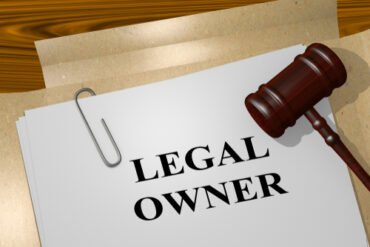What is a Preference In The World Of Insolvency?
A straightforward guide to s239 Insolvency Act 1986 - or s243 Unfair Preferences in Scotland A potential "preference" occurs when a company pays a specific creditor or group of creditors(s) and by doing so makes that creditor "better off" than the majority of other creditors, before going into a formal insolvency like administration or liquidation. However, the second important test is that there must be a "desire" to make that particular creditor better off.This is an area of insolvency law that is commonly misunderstood, but can cause many problems for those who create the preference. If the preference is proven it can lead to action against the beneficiary, the directors, lifting of the veil of incorporation, personal liability and if wrongful trading proven, disqualification under other provisions of the insolvency legislation. So how does preference happen? A fictional case study for a preference under s239 Insolvency Act 1986 Acme Nuts and Bolts Company Ltd, has been trading for many years and has seen a steady decline in sales and profits over recent times. Mr Bolt, the managing director, sits down with Mr Washer the financial director, and they read the accounts, look at the cashflow and decide that the company is insolvent. It is likely that the company will breach the bank overdraft if all creditors demands for payment are met. The PAYE is already 2 months behind and the most recent VAT quarter has not yet been paid.Mr Bolt thinks that a smaller and leaner workforce, operating in a much smaller property would be a viable business but the company's long term employees would be too expensive to pay off. Redundancy costs alone would be £100,000. They cannot see how to pay this and decided to slowly wind the company down before starting again.One of the suppliers to Acme is a company owned by Mr Bolt's brother, it is owed £12,000 for supplies in the last 30 days, and has always been paid on time by Acme. Another supplier is owed £16,000 and it has a smaller factory property available, that Mr Bolt would very much like to use to start a new company.Mr Bolt tells Mr Washer to pay both these amounts as soon as possible and then he decides that they will talk to an insolvency practitioner about the options for "dumping the company". Some 8 weeks later the company enters liquidation and the liquidator begins to examine the conduct of the company in the period leading up to the liquidation.He discovers that Mr Bolt's brother was paid £12,000 and the other supplier was paid £16,000, just before the company decided to cease trading and go down the liquidation path. VAT, PAYE and over £500,000 worth of other creditors debts were not paid.Under s239 insolvency Act, the payment to Mr Bolt's brother is a clear breach of the Act, both tests were positive, the company paid the debt when not paying PAYE/VAT and other creditors. Now the more difficult test - was their a desire to create a preference"?Because the brother was a "connected creditor" or associate through blood, the law automatically assumes that Mr Bolt wanted to make his brother better off. The liquidator demanded the money back from Mr Bolt's brother and the court agreed.On first inspection by the liquidator, the other payment to the company with the spare property was less clear cut. Was a payment made? Yes. Was it paid when other creditors were not paid? Yes. Was a desire to create a preference in place? Possibly but not conclusively. However, after a few weeks the liquidator noted that Mr Bolt had started a new company and the address was the same as the paid customer of Acme, so he took action to recover that money too. Interestingly, some of the company's assets appeared to have mysteriously found their way to that property too!The "desire to create a preference" test is much more difficult to prove in other cases, often the threat of the liquidator taking action sees a deal being done where some of the debt is repaid, to the liquidator, for the benefit of other creditors.This is a difficult subject matter but a vitally important one for every director to consider when reviewing the company's insolvency and how they have acted.This is a path that requires professional advice, common sense and full discussion by the board, and proper documentation of decisions to pay suppliers taken at board and management levels.Clearly, paying friends and family is risky. Paying back directors' loans is a preference if the company subsequently enters liquidation. Remember it is the word "desire" that is key. So paying a creditor that is a absolutely critical to the continued business such as a web hosting company for an e-commerce site is more of a commercial decision than a "desire" to help the hosting company.Finally, remember though that preferences are only crystallised by a formal insolvency like administration and liquidation. How do we avoid creating a preference? Common sense dictates that if the decision to pay someone seems "off" it usually is!The safest route is to ensure that all creditors are treated "equally". If that is not possible then ensure that if one creditor is being paid faster than others that there is a very strong commercial reason. For example, you may wish to pass a board resolution to "pay XZY Ltd as it maximises the interest of creditors to pay XZY Ltd as they're our only supplier of widgets, by paying them we keep the factory going and generate debtors". Consider rescue and insolvency advice at the same timeEnsure that you regularly consider of the company's solvency, you may ask for a time to pay PAYE or VAT along with asking the bank for support, introduction of new capital. If all of this is not sufficient to prevent the company running out of cash, then more radical solutions must be considered, such as administration and liquidation, company voluntary arrangement or receivership.This is a path that requires professional advice, common sense and full discussion by the board and proper documentation of decisions to continue trading and to pay suppliers taken at board and management levels.
Read





